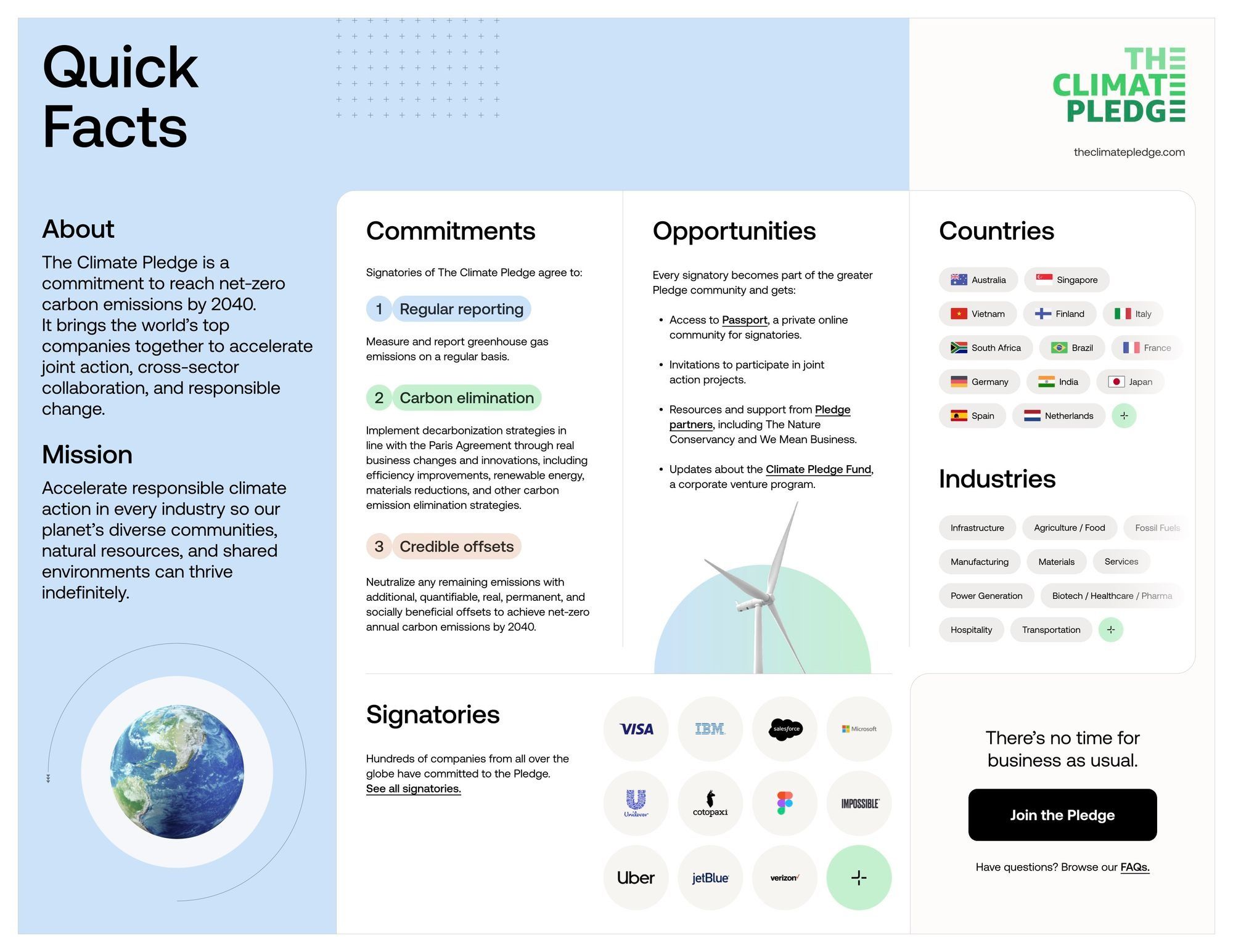The Climate Pledge vs. SBTi: Is There a Clear Path to Sustainability?

As the corporate world grapples with the urgency of climate change, Amazon's Climate Pledge and the SBTi offer two distinct roadmaps. But is it a matter of choosing one over the other, or can they coexist?
The Science Based Targets initiative (SBTi) has long been a beacon for corporations, guiding them towards clear and actionable goals for reducing carbon emissions. Yet, Amazon's Climate Pledge presents an alternative, prompting a deeper exploration of the paths to sustainability.

The Climate Pledge's Mission
Accelerate responsible climate action in every industry so our planet’s diverse communities, natural resources, and shared environments can thrive indefinitely.
When it comes to protecting our planet, there is no middle ground. By joining The Climate Pledge, your company can step up with Earth’s action-oriented leaders and take responsibility for what happens next.
Signatories of the Pledge agree to three areas of action:
1. Regular reporting. Measure and report greenhouse gas emissions on a regular basis.
2. Carbon elimination. Implement decarbonization strategies in line with the Paris Agreement through real business changes and innovations, including efficiency improvements, renewable energy, materials reductions, and other carbon emission elimination strategies.
3. Credible offsets. Neutralize any remaining emissions with additional, quantifiable, real, permanent, and socially beneficial offsets to achieve net-zero annual carbon emissions by 2040.
Amazon's Climate Pledge: Joining Forces with Global Leaders
Launched in collaboration with Global Optimism, the Climate Pledge commits signatories to net-zero carbon emissions by 2040, a decade ahead of the Paris Agreement. Amazon leads the charge, but they're not alone. 431 companies, including Verizon, Siemens, Microsoft, Unilever and Best Buy, have also pledged their commitment, showcasing a collective drive towards a sustainable future.
However, it's essential to note that the Climate Pledge and the SBTi aren't mutually exclusive. Companies can, and many do, commit to both, leveraging each initiative's strengths to accelerate their sustainability journey.
The Broader Context
Amazon's divergence from the traditional SBTi path, as highlighted in a recent Scope 3 Collective article, underscores the evolving landscape of corporate sustainability. Their commitment to working with "other organizations and credible third-party validators" suggests a broader, more inclusive approach to climate action.
Conclusion:
The journey to a sustainable future is multifaceted. While the SBTi offers a structured roadmap, the Climate Pledge exemplifies an alternative yet complementary path. Together, they represent the diverse strategies companies can employ to combat climate change.



Comments ()